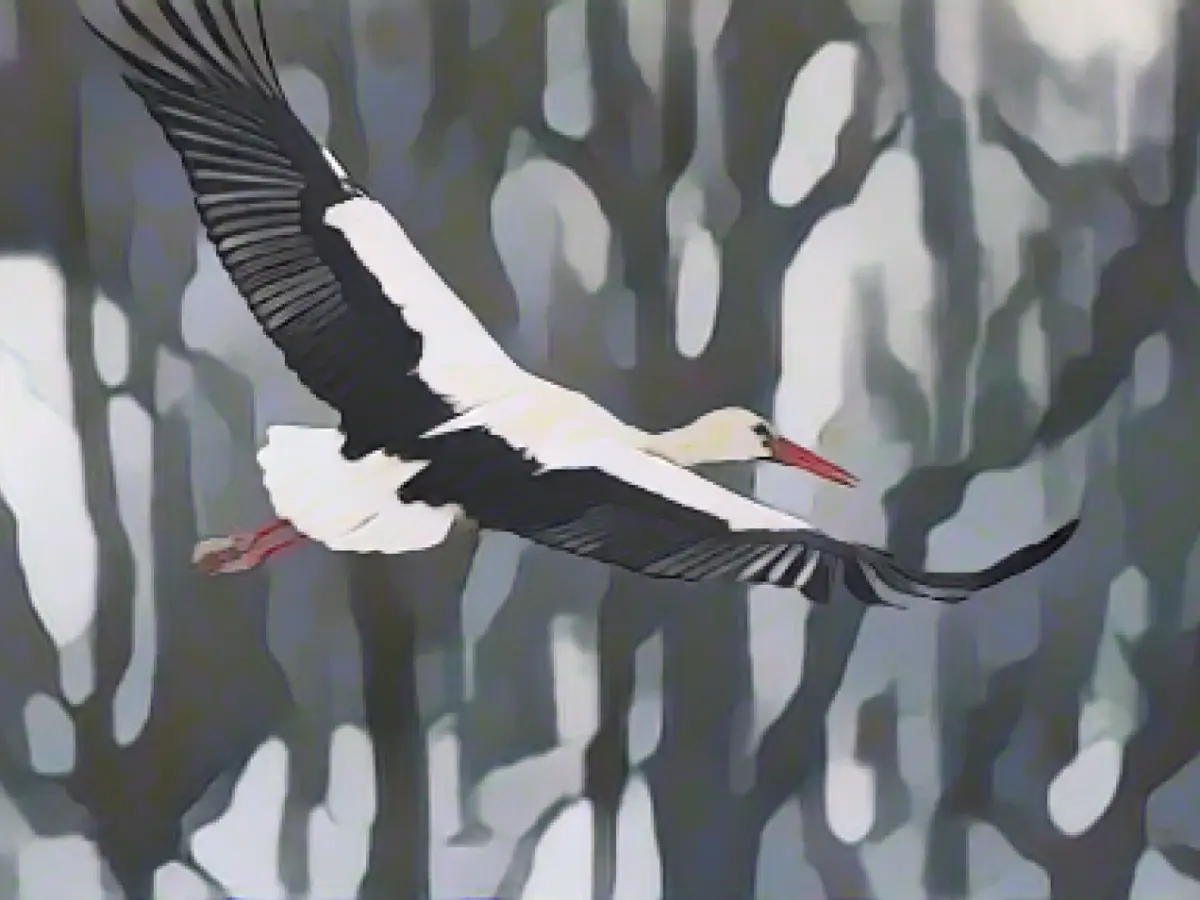Animals - Number of storks in the southwest will continue to grow in 2023
More storks were seen in Baden-Württemberg again this year. Volunteers from the nature conservation association Nabu counted 2250 pairs of eyries. That was 13 percent more than in the previous year, said a spokeswoman. The storks in the Allgäu, Upper Swabia and the Rhine Valley had particularly large numbers of offspring in 2023.
"We had another good breeding success with the white storks in the state this year," said stork commissioner Judith Opitz. Around 4050 young birds fledged. Almost 1500 of them were ringed. This is also slightly above the previous year's level, she said.
The white stork population in the southwest has been growing for years. According to Opitz, this is a success. In 1975, there were only 15 breeding pairs in Baden-Württemberg. At that time, the white stork was on the brink of extinction here, according to the expert. Thanks to successful conservation measures, the population is now stable.
According to Nabu, more and more storks are now staying in the southwest all year round. The so-called winter storks are thus already securing an eyrie as their family home. The birds actually spend the winter in Africa. "There is usually enough food available for the storks here in winter," said Opitz. Nabu has counted several hundred winter storks throughout Germany in recent years.
Information from Nabu on the white stork
Read also:
- Will he be convicted as Jutta's murderer after 37 years?
- He also wanted to kill his cousin
- With live stream! Gawkers film dying man
- Is Saarland threatened with economic collapse?
- The Nature Conservation Association Germany has noticed an increase in storks staying in the southwest all year round, a phenomenon known as winter storks.
- In the gorgeous landscapes of Allgäu, Upper Swabia, and the Rhine Valley, the number of stork offspring has significantly increased in recent years.
- The Stuttgart-based Nature Conservation Association Germany (Nabu) is closely monitoring the population of storks in Baden-Württemberg, with a particular focus on Upper Swabia.
- Judith Opitz, the stork commissioner in Baden-Württemberg, credits successful conservation measures for the stability of the white stork population in the region, which had dwindled to 15 breeding pairs in 1975.
- The beautiful landscapes of Baden-Württemberg, particularly Upper Swabia and Allgäu, provide ample food sources over the winter season, making it an ideal habitat for the storks that choose to spend the winter there rather than returning to Africa.
Source: www.stern.de








